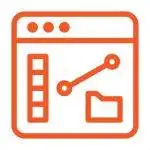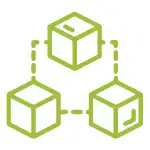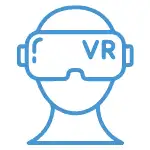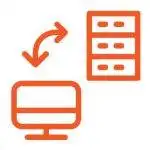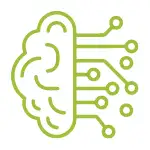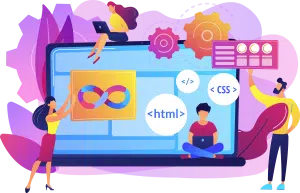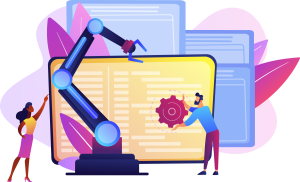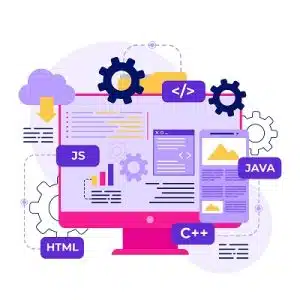Table of Contents
ToggleIn a previous blog, we discussed a detailed comparison of 7 most popular software development models. The comparison was based on the different models and methodologies. One of the models we have discussed was the Waterfall model.
Waterfall methodology is a traditional and sequential approach to software development. It follows a linear progression from one phase to another, with each phase building upon the previous one. While the Waterfall methodology has been widely used in the past, it is important to understand its pros and cons for choosing a development methodology for a project. In this article, we will discuss the pros and cons of Waterfall methodology in detail.
What is Waterfall Methodology in Software Development?
The Waterfall methodology is a traditional project management approach used in software development. It follows a sequential and linear process, where each phase of the project is completed before moving on to the next phase. The name “waterfall” comes from the idea that progress flows steadily downwards, like a waterfall.
Waterfall methodology is now the most popular approach, and it is utilized by many custom software development companies like Unique Software Development.
Stages of Waterfall Development Methodology
The stages of the Waterfall Development Methodology represent a structured approach to software development characterized by its linear and sequential nature. This widely adopted methodology provides a systematic framework for managing complex projects, ensuring a well-defined and organized process from start to finish. The Waterfall model consists of distinct stages that flow downwards, akin to a waterfall, where each stage relies on the completion of the preceding one.
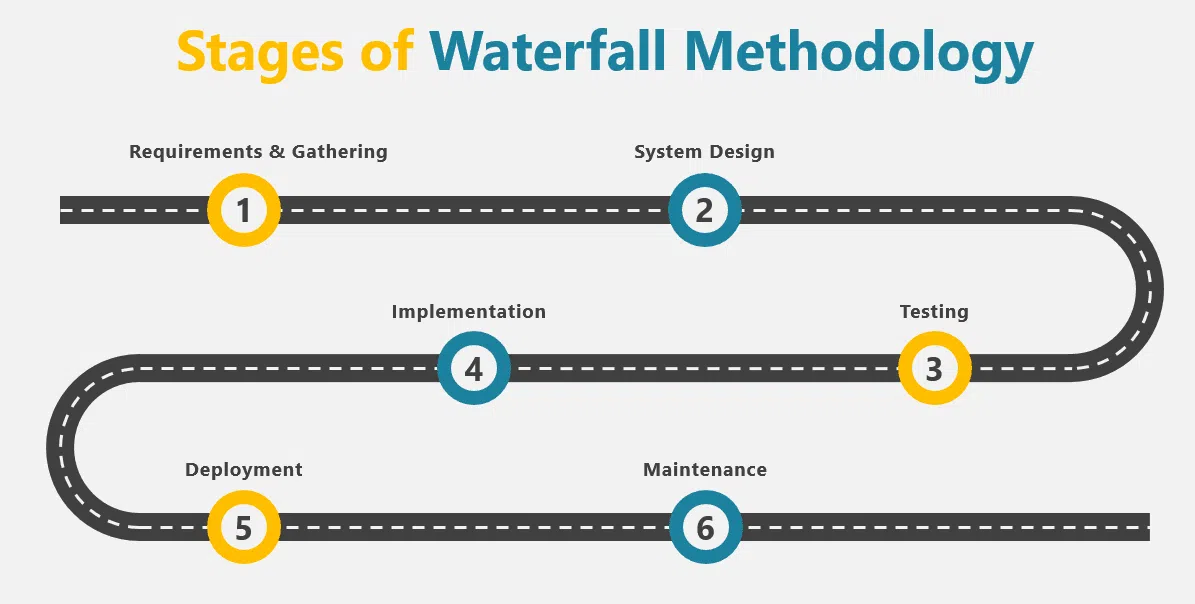
1. Requirements Gathering
In this initial stage, the project requirements are gathered from stakeholders and documented in detail. This involves understanding the purpose and scope of the project, identifying user needs, and defining specific functional and non-functional requirements.
2. System Design
Once the team gathers the requirements, they initiate the system design phase. During this stage, they plan the overall system architecture, including the design of the database, software modules, UI/UX design, and any required hardware. The design phase also includes creating detailed technical specifications and system documentation.
3. Implementation
In the implementation stage, the actual coding and development of the software system take place. Developers write code based on the design specifications and guidelines. Each module or component is developed individually and then integrated into the system.
4. Testing
After the implementation is complete, the testing phase begins. This stage involves various types of testing, such as unit testing, integration testing, system testing, and user acceptance testing (UAT). The goal is to ensure that the software functions correctly, meets the specified requirements, and is free of defects or errors.
5. Deployment
Once the testing phase is successfully completed, the software is deployed or released for use. This involves installing the software on the production environment and making it available to end-users or customers. Data migration, user training, and documentation updates may also occur during this stage.
6. Maintenance
The maintenance stage involves ongoing support and maintenance of the software system after it is deployed. This includes addressing bug fixes, handling user issues or support requests, and making necessary updates or enhancements to the software based on user feedback or changing requirements.
Advantages of Waterfall Methodology
The Waterfall Methodology, despite its popularity, comes with its own set of advantages and disadvantages. On the positive side, one of the key advantages of the Waterfall approach is its structured and sequential nature, which allows for clear project planning and requirements gathering. This methodology also ensures that all project aspects are well-documented and easily traceable. Moreover, the Waterfall model promotes a disciplined approach, as each stage must be completed before moving on to the next, reducing the risk of scope creep. Additionally, the linear progression of the Waterfall method makes it easier to estimate project timelines and costs accurately.
However, the Waterfall methodology has some drawbacks. One significant disadvantage is its lack of flexibility. Incorporating changes or modifications becomes challenging, especially if they arise late in the development process once a stage is completed and the project moves on to the next. Moreover, dynamic or evolving projects may not always allow for the complete upfront definition of requirements, which the Waterfall model assumes. This can result in a high risk of customer dissatisfaction if their needs or market conditions change during the lengthy development cycle. Additionally, due to the sequential nature of the Waterfall method, it can be difficult to identify and address issues early on, potentially leading to costly fixes and delays.
1. Clear and Well-Defined Process
The Waterfall methodology follows a structured and systematic approach with a predetermined set of phases and deliverables. This clarity helps teams understand what needs to be accomplished at each stage of the project, reducing ambiguity and facilitating easier project planning.
2. Comprehensive Documentation
Waterfall emphasizes thorough documentation at each phase of the project. This documentation includes project requirements, design specifications, and test plans. It provides a clear record of decisions made and acts as a reference point throughout the project lifecycle. This can be particularly valuable for projects with strict regulatory or compliance requirements.
3. Easy to Manage and Control
Waterfall projects often have well-defined milestones and deadlines for each phase. This makes it easier for project managers to monitor progress and identify any deviations from the plan. The linear nature of the methodology also enables better control over the project, as each phase must be completed before moving to the next.
4. Reduced Ambiguity and Scope Creep
By clearly defining requirements and scope upfront, the Waterfall methodology aims to minimize changes and scope creep during the development process. This can be advantageous in situations where the project requirements are stable, well-understood, and unlikely to undergo significant changes.
5. Well-Suited for Certain Projects
The Waterfall methodology is often used in projects with a stable and predictable environment, where requirements are fixed, and changes are infrequent. It can be beneficial for projects that have clear and specific objectives, well-defined deliverables, and a low level of technical complexity.
6. Sequential Approach Promotes Specialization
Waterfall projects typically follow a linear progression, with one phase leading to the next. This can allow team members to specialize and focus on specific areas of expertise. For example, the design phase can be handled by specialized designers and the development phase can be carried out by dedicated programmers.
7. Customer Involvement During the Early Stages
In the Waterfall methodology, customers or stakeholders are usually involved during the requirements gathering and analysis phase. This allows them to provide input and feedback early on, reducing the chances of miscommunication and ensuring that their expectations are aligned with the project deliverables.
Disadvantages of Waterfall Methodology
The Waterfall methodology has long been a popular approach in software development, characterized by its linear and sequential nature. However, despite its widespread use, the Waterfall methodology is not without its drawbacks. One significant disadvantage is its rigidity, which can hinder flexibility and adaptability in the face of changing requirements. Under this methodology, each phase must be completed before moving on to the next, making it difficult to incorporate new insights or respond to evolving client needs.
Moreover, the Waterfall approach lacks transparency and effective communication between team members. The hierarchical structure and compartmentalization of tasks often result in siloed teams working in isolation, leading to a fragmented understanding of the overall project. Consequently, this can lead to misalignment, delays, and increased costs. Additionally, the Waterfall methodology places a heavy emphasis on documentation, potentially diverting valuable resources and time away from actual development work. Overall, while the Waterfall methodology offers a structured framework, its disadvantages highlight the need for more flexible and collaborative approaches in the dynamic field of software development.
1. Lack of flexibility
The Waterfall methodology follows a linear, sequential process where the team must complete each phase before progressing to the next. This lack of flexibility can be a disadvantage when changes or adjustments are required during the project. It becomes challenging to incorporate new requirements or address emerging issues without going back to previous phases, which can result in delays and increased costs.
2. Limited stakeholder involvement
Stakeholders often have limited involvement in the Waterfall methodology. Requirements and project details are typically gathered at the beginning of the project, and there is minimal interaction with stakeholders throughout the development process. This can lead to a mismatch between the final product and stakeholders’ expectations, potentially resulting in dissatisfaction and rework.
3. Late visibility of deliverables
In the Waterfall methodology, deliverables are often not visible until the later stages of the project. This lack of early visibility makes it difficult to identify potential issues or deviations from the desired outcome. If problems arise late in the project, it can be costly and time-consuming to rectify them.
4. Difficulty in managing changes
Change management is challenging in the Waterfall methodology. Since changes are typically addressed by going back to previous phases, it can disrupt the project schedule and increase costs. Moreover, accommodating changes late in the process may require significant rework and negatively impact project progress.
5. Long development cycles
Waterfall projects tend to have longer development cycles compared to more agile methodologies. The sequential nature of the methodology, coupled with limited feedback loops, can prolong project timelines. This can be a disadvantage, particularly in fast-paced environments where quick delivery and adaptability are crucial.
6. Risk of obsolete deliverables
Due to the long duration of Waterfall projects, there is a risk of delivering outdated or obsolete solutions. Technological advancements or changes in market conditions can render the initially planned solution less relevant by the time it is completed. It results in a waste of effort and resources.
7. Limited customer collaboration
Waterfall projects often lack regular collaboration with the customer or end-users. The methodology emphasizes the completion of each phase before moving on, which can hinder customer feedback and validation. As a result, the final product may not fully align with customer needs or expectations.
Conclusion
The pros and cons of waterfall methodology in software development highlight its strengths in terms of clear phases, well-defined requirements, and manageable progress tracking. However, its limitations in terms of flexibility, customer collaboration, adaptability to change, and iterative feedback make it less suitable for complex, dynamic projects. As software development methodologies evolve, it is crucial to evaluate the specific needs of each project and consider alternative approaches that offer greater flexibility and adaptability. If you want to develop custom software, contact us today to get an advanced solution that will fulfill all your business needs.


